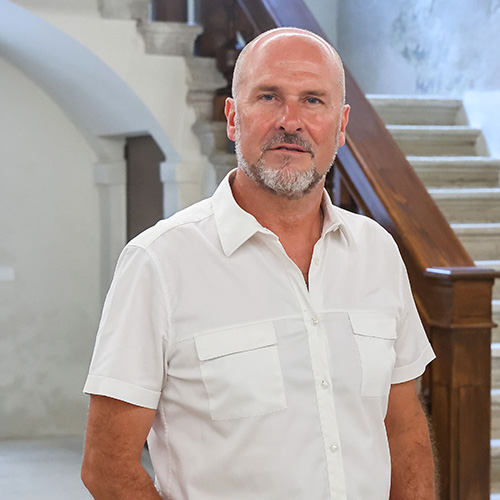
Prof Rado Pišot
Institute for Kinesiology Research
Science and Research Centre
Koper, Slovenia
Bedrest: A Ground-Based Model for Simulating Microgravity
Rado Pišot1, Bostjan Simunič1, Uroš Marušič1, Gianni Biolo2, Carlo Reggiani1,4, Bruno Grasssi3, Marco Narici1,4
1Institute for Kinesiology Research, Science and Research Centre Koper, Slovenia;
2Department of Medical Sciences, University of Trieste, Italy
3Department of Medicine, University of Udine¸ Italy
4Department of Biomedical Sciences, University of Padova, Padua, Italy
The paradox of rest lies in its dual nature: while essential for recovery, prolonged physical inactivity (PI) can be harmful. Research into the effects of physical inactivity on the human body highlights numerous consequences, including the deterioration of various subsystems—ranging from the musculoskeletal and cardiovascular systems to respiratory function, motor control, perception and overall wellbeing. Those effects have been extensively studied through controlled bedrest campaigns, which vary in duration (days to months), position (horizontal to head-down tilt), and countermeasures to mitigate the absence of gravity. These protocols follow strict guidelines to ensure consistency across studies. These conditions help researchers isolate the effects of inactivity from other variables, providing valuable insights into its physiological consequences.
Over the past 20 years, the Bedrest Centre Koper, Slovenia, in collaboration with international partners, Izola General Hospital, and Valdoltra Orthopaedic Hospital, has conducted seven bedrest studies, with 11 cohorts, including 107 participants, being in bed between 10 to 35 days. Our research has shown that while PI caused by bed rest leads to rapid changes in muscle mass, strength, aerobic and glucose metabolism and in motor control, nutritional and motor interventions significantly reduce functional decline and accelerate functional recovery. While differences emerged between age groups and intervention types, where a multimodal approach with prehabilitation, nutritional supplements and cognitive training proved the most effective. By overcoming current limitations and advancing research, spaceflight interventions and patient rehabilitation can become more user-centered, effective, and inclusive, delivering innovative solutions with real-world impact.
References
- Pišot, R. et al (2008). Whole muscle contractile parameters and thickness loss during 35-day bed rest. European journal of applied physiology, vol. 104, no. 2, str. 409-414
- Biolo, G. et al (2008). Positive energy balance is associated with accelerated muscle atrophy and increased erythrocyte glutathione turnover during 5 wk of bed rest. The American journal of clinical nutrition. vol. 88, no. 4, str. 950-958.
- Pišot R. et al. (2016). Greater loss in muscle mass and function but smaller metabolic alterations in older compared with younger men following 2 wk of bed rest and recovery. J Appl Physiol., 120(8):922-9.
- Šimunič, B. et al. (2019). Tensiomyography detects early hallmarks of bed-rest-induced atrophy before changes in muscle architecture. Journal of applied physiology. 2019, vol. 126, iss. 4, str. 815-822,
- Monti, E. et al. (2021). Neuromuscular junction instability and altered intracellular calcium handling as early determinants of force loss during unloading in humans. The Journal of Physiology, 599(12), 3037-3061
- Marusic U. et al. (2021). Nonuniform loss of muscle strength and atrophy during bed rest: a systematic review. J Appl Physiol., 131(1):194-206.
- Martino G. et al. (2024). Neuromodulatory Contribution to Muscle Force Production after Short-Term Unloading and Active Recovery. Med Sci Sports Exerc., 56(9):1830-1839.
- Motanova et al. (2025). Neuromuscular Junction Instability with Inactivity: Morphological and Functional Changes After 10-Day Bed Rest in Older Adults. J Physiol (In press)
- Pišot, R. et al. (2025) Addressing the paradox of rest with innovative technologies. Slovenian journal of public health : the journal of National Institute of Public Health. [Online ed.]. 2025, letn. 64, št. 2, str. 68-72,
